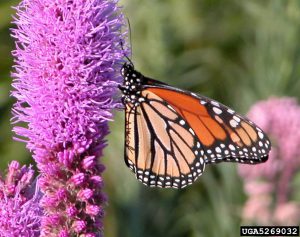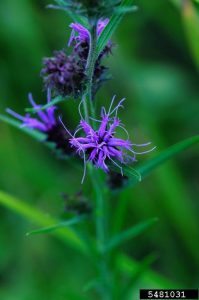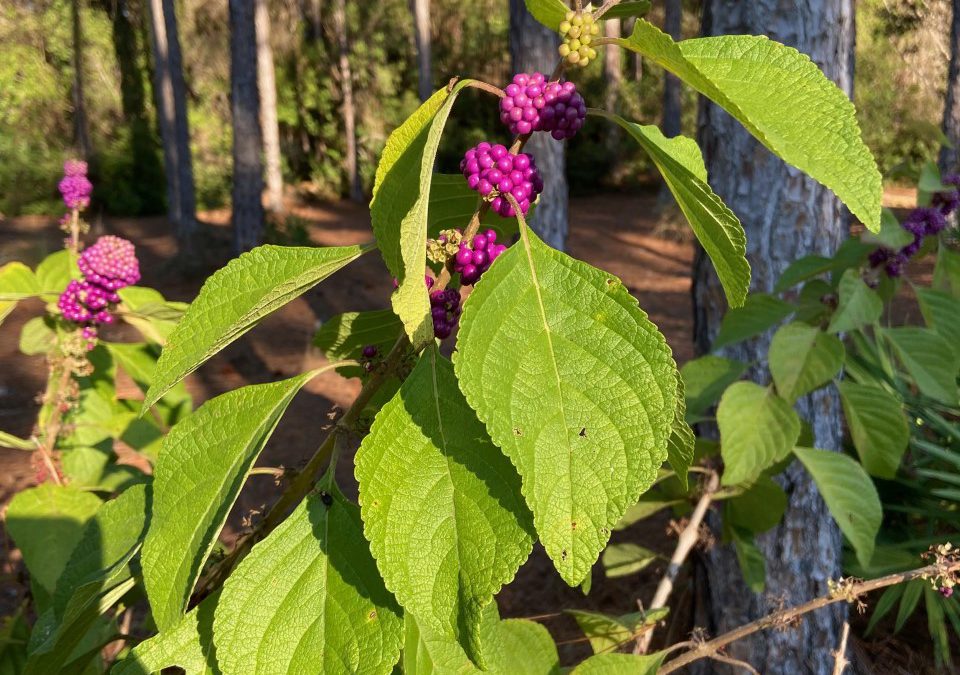
Fall Color and Native Plants
Many of the native plants in the Northwest Panhandle of Florida are often placed into landscapes as backdrop support plants. Many bring the solid green color to emphasis other colorful plants. What is often missed is the opportunity to see the fall color palate of these plants. Sometimes the easiest thing to do is travel to the nearest nursery to purchase annuals and perennials that come from all over the world and have been time tested to determine their invasiveness outside of planting areas and are determined to be at a minimal risk of colonizing outside of their intended planting area.
Native plants may not be in the thought process and are often overlooked for their exceptional color that can be a focal point in the landscape. Several native plants bring multi-colored leaves or flowers adding fall interest for all to enjoy. Let us take a moment and look at just a few of the plants that can be found in the Florida Panhandle that offer the many colors you may be looking to utilize in your landscape.
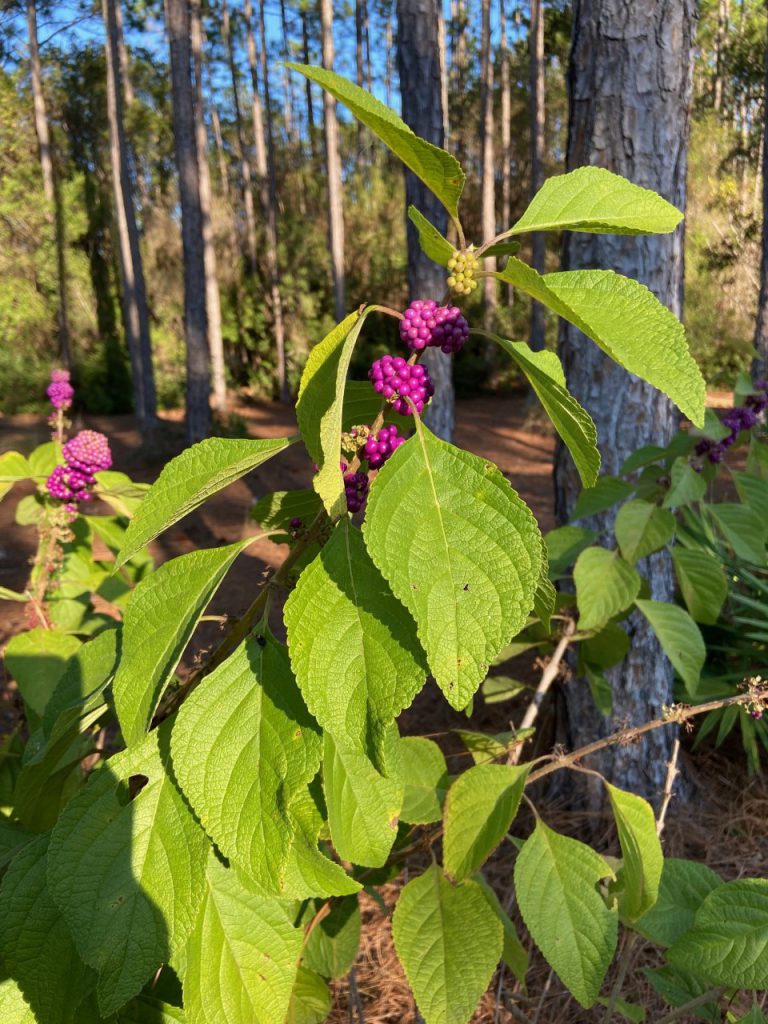
American Beautyberry (Callicarpa americana). Photo courtesy: Stephen Greer, University of Florida/IFAS Extension – Santa Rosa County
American Beautyberry
Beautyberry has two wonderful display times each year. In the late spring to early summer petite light colored lavender flowers open in small clusters along the upright stems of the plant. This flowering can be a brief soft show for a few weeks. The big color show comes in the fall with colorful shiny purple fruit clusters known as drupes. The fruit clusters around the stems of the plant in groups of 20 plus drupes. Often you will see multiple clusters on a given stem spaced approximately 3 to 4 inches apart in the beside the leaf petiole area.
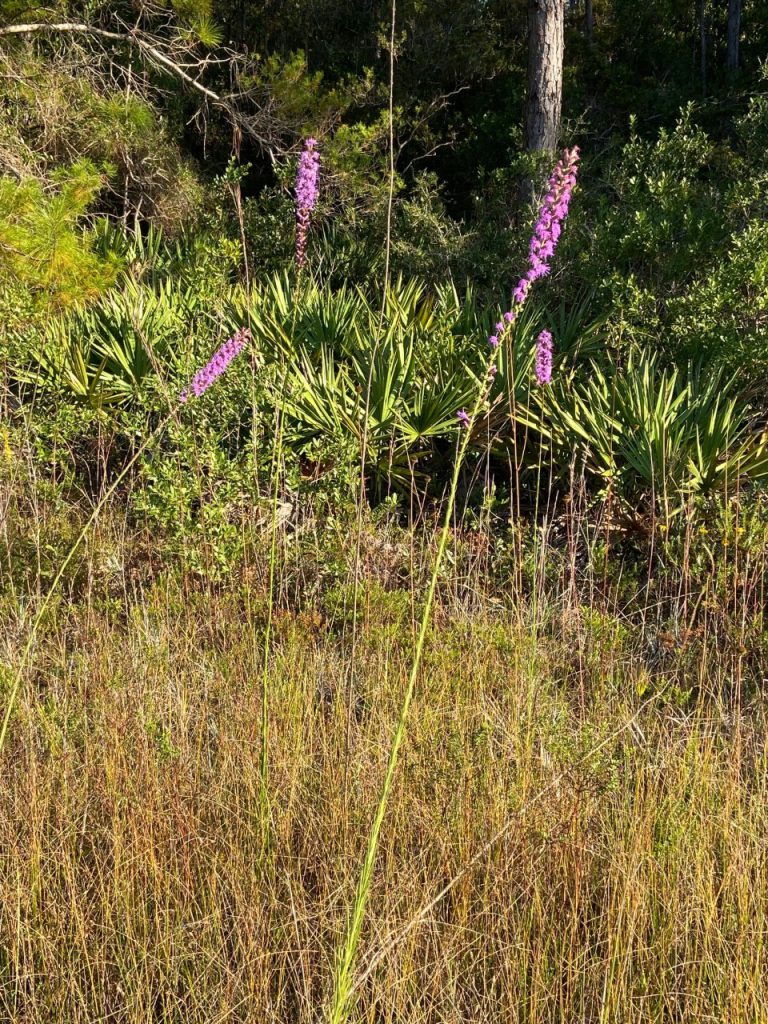
Blazing Star (Liatri spicata). Photo courtesy: Stephen Greer, University of Florida/IFAS Extension – Santa Rosa County
Blazing Star
Blazing star is another fall beauty that creates a great vertical flower floret display of tall spires showing a pleasant medium lavender color. The clustered small flowers provide color in the garden for several weeks. This pollinator plant attacks Monarchs and Swallowtails butterflies plus others adding more enjoyment to the garden. For quality establishment and growth, it needs well drained soil, yet soils that are not high in fertility. Overly fertile soils will over stimulate flower stem growth that will grow too tall and flop over. Blazing star can be divided once it is established and has expanded through underground stem growth creating a wider plant base. In sandy soil sites that have been disturbed through clearing this plant will often establish through seed from adjacent plant settings.
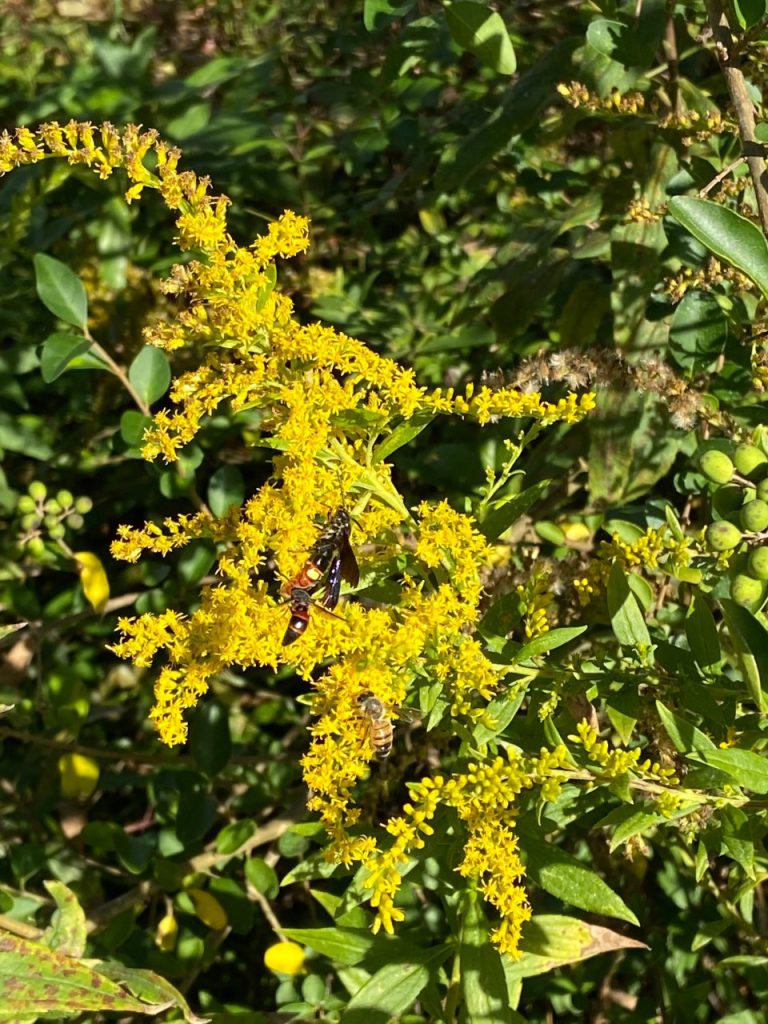
Golden Rod (Solidago spp.). Photo Courtesy Stephen Greer, University of Florida/IFAS Extension – Santa Rosa County
Golden Rod
One of the stronger colors of fall is yellow and the native Golden Rod is a big contributor with its upright stems holding multi-clusters of small bright yellow blooms. This plant serves as a pollinator plant for butterflies, bees and other beneficial insects. Often associated with fall allergies, this plant is not likely the culprit as the pollen is heavy and does not blow on the wind as ragweed will do. Ragweed blooms around the same time and does not have a showy bloom, yet many suffer from allergic reactions to this plant making it the likely problem plant for allergy sufferers. Golden Rod tends to colonize and crowd out other native plants so don’t hesitate to thin out the plant area if it is expanding too quickly.
Growing native plants including fall flowering selections is a fun journey for all to enjoy as the cool hints of fall weather moves in. Do a little research and keep in mind there is an Extension office in every county to assist in addressing your gardening needs.


